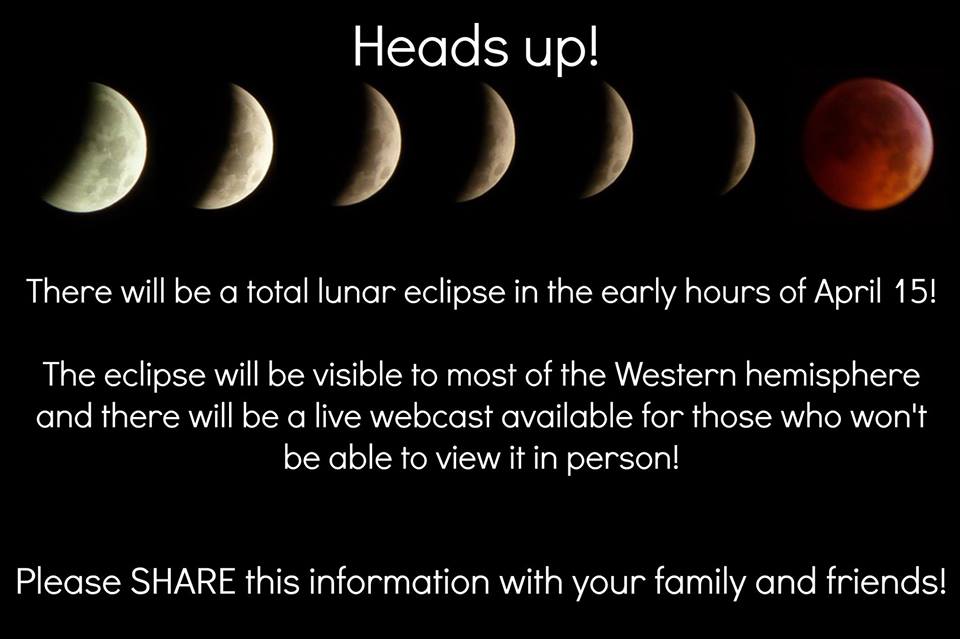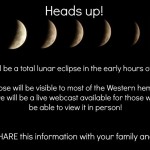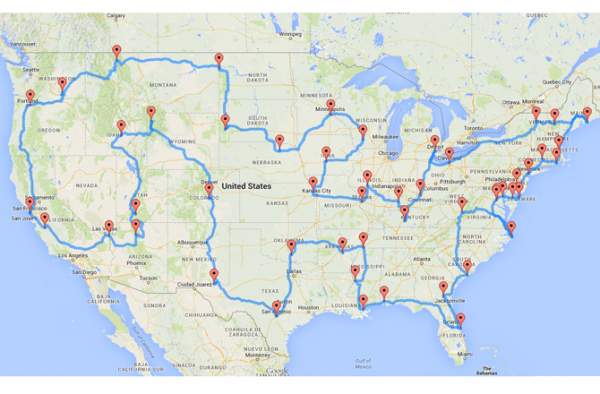
Where to see the eclipse
Continents seeing at least some parts of the eclipse:
West in Europe
South/East Asia
Much of Australia
Much of Africa
Much of North America
Much of South America
Pacific
Atlantic
Indian Ocean
Antarctica
Total eclipse visible in:
Locations being able to see at least parts of the Total part.
Detroit, Michigan, U.S.A.
São Paulo, São Paulo, Brazil
Guatemala, Guatemala
Washington DC, District of Columbia, U.S.A.
Havana, Cuba
Los Angeles, California, U.S.A.
Honolulu, Hawaii, U.S.A.
Sydney, New South Wales, Australia
Lima, Lima, Peru
Brisbane, Queensland, Australia
Montreal, Quebec, Canada
Chicago, Illinois, U.S.A.
Rio de Janeiro, Rio de Janeiro, Brazil
Buenos Aires, Argentina
San Francisco, California, U.S.A.
Caracas, Venezuela
Santiago, Chile
New York, New York, U.S.A.
Mexico City, Federal District, Mexico
Melbourne, Victoria, Australia
Partial eclipse visible in:
Madrid, Spain
Gibraltar, Gibraltar
Lisbon, Portugal
Freetown, Sierra Leone
Conakry, Guinea
Bissau, Guinea-Bissau
Banjul, Gambia
Dakar, Senegal
Guam (Hagåtña), Guam
Darwin, Northern Territory, Australia
Tokyo, Japan
Seoul, South Korea
Manila, Philippines
Good news for those living in the Western Hemisphere: we’re going to have a great view of the total lunar eclipse in the early hours of April 15!
Fred Espenak (NASA/GSFC) has broken down the predicted timeframe of the eclipse:
Penumbral Eclipse Begins: 04:53:37 UT
Partial Eclipse Begins: 05:58:19 UT
Total Eclipse Begins: 07:06:47 UT
Greatest Eclipse: 07:45:40 UT
Total Eclipse Ends: 08:24:35 UT
Partial Eclipse Ends: 09:33:04 UT
Penumbral Eclipse Ends: 10:37:37 UT
UT is 4 hours ahead of the Eastern time zone, 7 hours ahead of Pacific. The total eclipse lasts 78 minutes, so that’s plenty of time to head outside and take a peek.
When the eclipse happens worldwide
Lunar eclipses look approximately the same all over the world and happen at the same time.
The times displayed might be a minute or two off actual times.
Advertising
Event UTC Time Time in Gaziantep* Visible in Gaziantep
Penumbral Eclipse begins 15 Nis, 04:55 15 Nis, 07:55 No, below horizon
Partial Eclipse begins 15 Nis, 05:59 15 Nis, 08:59 No, below horizon
Full Eclipse begins 15 Nis, 07:08 15 Nis, 10:08 No, below horizon
Maximum Eclipse 15 Nis, 07:46 15 Nis, 10:46 No, below horizon
Full Eclipse ends 15 Nis, 08:23 15 Nis, 11:23 No, below horizon
Partial Eclipse ends 15 Nis, 09:32 15 Nis, 12:32 No, below horizon
Penumbral Eclipse ends 15 Nis, 10:36 15 Nis, 13:36 No, below horizon
Total lunar eclipses are great because they can be viewed directly with the naked eye, unlike solar eclipses. Though binoculars or telescopes aren’t needed, go ahead and break them out so you can get the full experience of the eclipse.
The lunar eclipse occurs when the Earth is situated directly between the sun and the full moon. The moon passes through Earth’s “umber,” making it appear a dark reddish-orange color. Because the Earth is completely obstructing the moon from receiving light from the sun, the light gets there indirectly as it has been filtered and refracted through the atmosphere.
Now, even though there is a full moon each month, there isn’t an eclipse each month because the Earth, moon, and sun aren’t exactly in line all the time. The moon’s orbit around the Earth is inclined 5° more than Earth’s orbit around the sun. This tilt keeps the moon out of the direct path of Earth most of the time. Lunar eclipses aren’t rare, as they occur about twice a year, but not all of them are total eclipses, and some are so faint that the shadow is barely noticeable.
However, the eclipse on the 15th is fairly special, as it is the first in a tetrad of total lunar eclipses, spaced about six months apart. All four should be visible to nearly everyone living in the United States.
For those living in areas where the eclipse won’t be visible (or for those who aren’t able to head outside and see it), the good folks at the Slooh Space Camera are putting on a special webcast of the event. Bob Berman and Paul Cox will be hosting the event and will be providing commentary leading up to the eclipse.
You can view the webcast here:







 Photographer Finds Locations Of 1960s Postcards To See How They Look Today, And The Difference Is Unbelievable
Photographer Finds Locations Of 1960s Postcards To See How They Look Today, And The Difference Is Unbelievable  Hij zet 3 IKEA kastjes tegen elkaar aan en maakt dit voor zijn vrouw…Wat een gaaf resultaat!!
Hij zet 3 IKEA kastjes tegen elkaar aan en maakt dit voor zijn vrouw…Wat een gaaf resultaat!!  Scientists Discover 512-Year-Old Shark, Which Would Be The Oldest Living Vertebrate On The Planet
Scientists Discover 512-Year-Old Shark, Which Would Be The Oldest Living Vertebrate On The Planet  Hus til salg er kun 22 kvadratmeter – men vent til du ser det indvendigt
Hus til salg er kun 22 kvadratmeter – men vent til du ser det indvendigt  Superknepet – så blir snuskiga ugnsformen som ny igen!
Superknepet – så blir snuskiga ugnsformen som ny igen!  Meteorite That Recently Fell in Somalia Turns Out to Contain Two Minerals Never Before Seen on Earth
Meteorite That Recently Fell in Somalia Turns Out to Contain Two Minerals Never Before Seen on Earth  Nearly Frozen Waves Captured On Camera By Nantucket Photographer
Nearly Frozen Waves Captured On Camera By Nantucket Photographer  It’s Official: Astronomers Have Discovered another Earth
It’s Official: Astronomers Have Discovered another Earth 